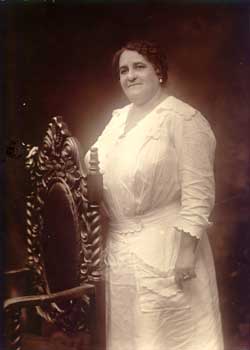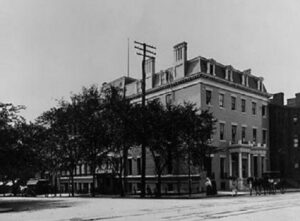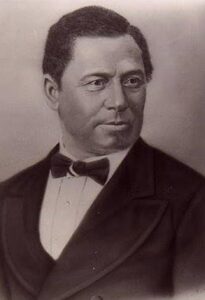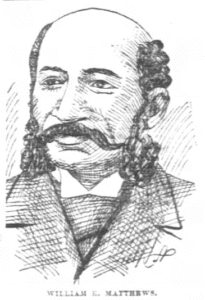Once upon a time in Black Entrepreneur History lived a pioneering African American woman named Maggie Lena Walker who was the first Black woman who founded a banking institution in the USA and became its president, along with being a civil rights leader and women’s suffragist.
Maggie Lena Walker was born to Lizzie Draper, a formerly enslaved housekeeper, as Maggie Lena Draper, in Richmond, Virginia in 1864, one year after the Emancipation Proclamation was signed abolishing slavery. Therefore, she was born free.
Her biological father was a white Irish descended man named Eccles William Max Cuthbert who was a Confederate. By the age of six, according to documents, her mother had married a man named William Harrison Mitchel, and that was the man that she grew to know as a father[1].
By the time she was 16 years old, Maggie Lena Draper was a student and her mother worked as what was called washwoman for who hired her, meaning she would wash their clothing or dishes.
Maggie helped her mother daily and she cared for her younger brother named John, who was also in school at the time. It is unknown the whereabouts of her stepfather William Mitchel at the time, however, she lived with not just her mother and brother, but with her two maternal uncles in the same home.[2] Her uncles both worked at a tobacco facility.
At the age of 14, Maggie Lena Draper joined the Independent Order of St. Luke which was an organization created to assist the sick and bury the dead after the Civil War. She’d become dedicated to the independence and solidarity of Black people at this very young age.
She graduated highschool in 1883 when she was 19 years old and became a teacher for 3 years before leaving teaching to marry. At the time of her marriage, she was already a well known speaker and leader in the Order of St. Luke, traveling around the country.
“The fact that we are at the very bottom of the ladder shouldn’t dishearten us. Faith in God and faith in ourselves can work miracles. Sisters, let us join hands. Let us trust each other, let us believe in each other, and half the battle is won.” – Maggie Lena Walker
Daily Press (Newport News, Virginia) 07 Feb 1995, Tue Page 60
Marriage and Children
By the time she was about 23 years of age in the year 1887, Maggie Lena Draper became Maggie Lena Walker when she married five years her senior named Armstead Walker, Jr. with whom she bared three children, one which passed away. Her living children were sons, Melvin D. W. and Russel T. Russel T was the oldest, born in 1896, Melvin D born in 1888[3].
Banking Career and Civil Rights Leader
While her children were still of preschool age, Maggie Lena Walker worked as a clerk while her husband Armstead was a brick mason. Her mother lived with them.
There had always been a struggle for Black people in America, and Maggie Lena Walker and her family knew it very well. Black people were shut out of much of everything from the white population who refused their patronage, therefore, Maggie Lena Walker developed an idea to get everyone together and open their own. It would take cooperation from everyone to achieve anything Black owned and her sights were on a financial institution.
Therefore, it was at the Independent Order of St. Luke Convention in Virginia in 1901 that she had an idea for a bank. She wanted not only a bank but a newspaper and even a large marketplace for Black shoppers since Black people weren’t allowed into white stores and denied basic liberties and freedoms as their white counterparts, though paying taxes. She wanted to help alleviate that ongoing problem.
“Let us put our money together, let us use our money; Let us put our money out at usury among ourselves, and reap the benefit ourselves.” Maggie Lena Walker
Daily Press (Newport News, Virginia) 07 Feb 1995, Tue Page 60
It was in 1903 that Maggie Lena Walker founded and opened the St. Luke Penny Savings Bank. The financial institution grew and bought out other banks and became Consolidated Bank and Trust Company which is still open today with multiple branches. It provided loans and kept money circulating in the Black community instead of building and buying into the system of prejudice that used the money to keep Black people oppressed[4]. She’d become one of the most well-known Black business women in the country.
By 1920, 625 Black homes were purchased through the bank she founded.
Fight for Women’s Rights and How Black Men Should Elevate & Defend Black Women
Maggie Lena Walker founded the Richmond Chapter of the Council of Colored Women, and in this foundation, she became active in raising money to preserve the famous Black abolitionist Frederick Douglass’ home in Washington. Being that she’d always been passionate about the rights of women, she was an avid supporter of institutions founded by Black women. She also was very bothered whenever Black men didn’t defend Black women from being mocked by white men.

In March 1906, she delivered a speech titled Beniah’s Valor: Address for Men Only. The speech was targeted to men because it was calling for African American men to defend African American women. Read below:
This man, calling himself a servant of God, standing in God’s holy sanctuary, on God’s holy day, said, “You never hear of white men committing assault upon Negro women – assault means resistance: no Negro woman knows what virtue is.” If a colored man, anywhere – on land, on water, or in the air – had to an assemblage of white men, made any such statement concerning the White woman of these United States, the white men would have arisen in their might and that colored man would have died with that awful slander warm upon his lips.
My dear friends, are we less to you than the white women are to the white men? Source: The Montgomery Advertiser (Montgomery, Alabama) 16 Sep 2018, Sun Page E3
The Richmond Chapter of the Council of Colored Women also provided employment for African Americans and taught children financial success and about being proud of being Black.
Walker was also a founder of the Virginia Negro Organization Society which was a coalition of Black organizations while also a member of the NAACP and Urban League
Surviving Tragedy
In 1915, her son Russell accidentally shot and killed her husband, his father. It was reported that Russell thought he was a burglar when he shot the gun, not realizing that it was his father[5]. Maggie Lena Walker had become a widow with the death of Armstead. [6].
The Home of Maggie Lena Walker
It was in 1930 and 65 years old that she had a personal real estate value of $15000, equal to $225,000 in 2021.
Maggie Lena Walker’s home had twenty rooms, complete with a salon which she would entertain distinguished guests in the Black community such as Renaissance poet Langston Hughes, writer W.E.B. DuBois, Marcus Garvey and founder of Tuskegee University Booker T. Washington along with founder of Bethune College, Mary McLeod Bethune. The company she kept shows how in tune with the community she was because all of these people were involved with the movement of Black people forward and in independence.
The home was well decorated with a bronze statue at the foot of the staircase. To make guests feel at home, for those who chewed tobacco, which was popular at the time, there was a spittoon located at the marble fireplace. This shows how much attention to detail she was with her home and for her guests.
There was even an enclosed porch on the second floor to which she spent most of her time for the last ten years of her life wheelchair bound due to her knees collapsing into uselessness due to paraplegia. She had an elevator built inside to transport her up and down in her home. Being on the porch kept her “free” from being less mobile because she could look out and enjoy the outside[7].
Inside this home previously owned by physicians, she converted one of the rooms into a playroom for her grandchildren. Another room she converted into a library which was full of Black history books and classics which showed her love for reading, knowledge and teaching.
Death
Maggie Lena Walker passed away, having never remarried, on December 15, 1934 after she had been cared for over a year for diabetic gangrene which was diagnosed in August of 1933.
Previous to this diagnosed diabetic illness, she’d been wheelchair bound. It hadn’t stopped her from working until nearly right up to her death because she’d accommodated herself with a special desk and chair at the bank. She stopped working only a month prior to dying.
Maggie Lena Walker was buried in Evergreen Cemetery on December 19, 1934.[8]

Sources
- [1]Year: 1870; Census Place: Richmond Madison Ward, Henrico, Virginia; Roll: M593_1654; Page: 91A; Family History Library Film: 553153
- [2]Year: 1880; Census Place: Richmond, Henrico, Virginia; Roll: 1371; Page: 239A; Enumeration District: 087
- [3]Year: 1900; Census Place: Richmond, Jackson Ward, Richmond City, Virginia; Page: 6; Enumeration District: 0108; FHL microfilm: 1241739
- [4]The Montclair Times (Montclair, New Jersey)10 Jan 1985, Thu Page 4
- [5]Daily Press (Newport News, Virginia) 07 Feb 1995, Tue Page 60
- [6]Year: 1920; Census Place: Richmond Madison Ward, Richmond (Independent City), Virginia; Roll: T625_1911; Page: 25A; Enumeration District: 144
- [7]The Baltimore Sun (Baltimore, Maryland) 19 Aug 1984, Sun Page 102
- [8]Virginia Department of Health; Richmond, Virginia; Virginia Deaths, 1912-2014





More Related Stories
James Wormley – Founder of the Most Expensive Hotel in Washington D.C. in 1800s – the Wormley Hotel
William E. Matthews – Wealthy Financial Broker & Civil Rights Leader of 1800s
Charles Porter Grove – Owner of Montana and Illinois Gold Mining Company & Leader of the “Dreamed” Grove City, Montana